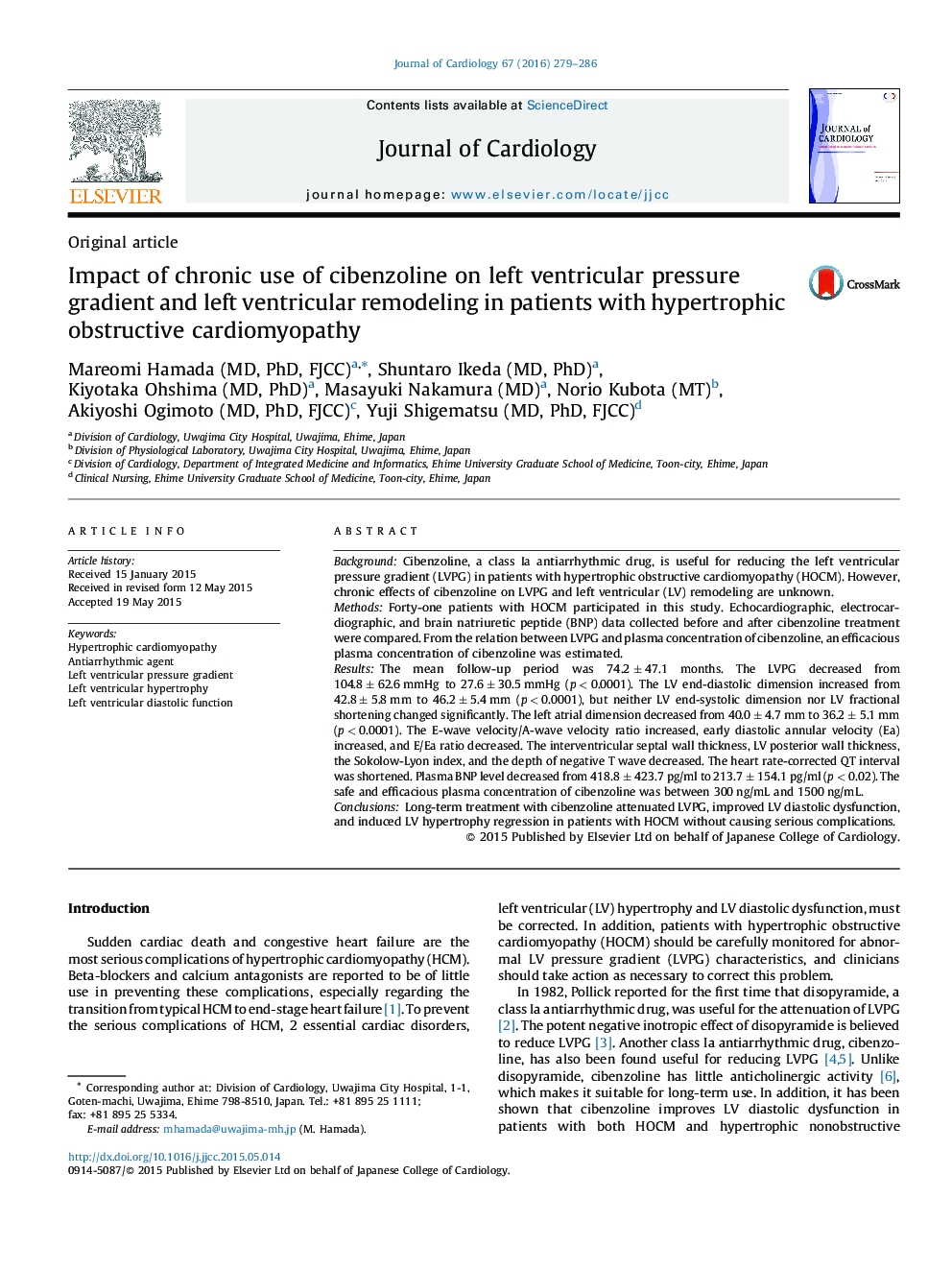| Article ID | Journal | Published Year | Pages | File Type |
|---|---|---|---|---|
| 2962741 | Journal of Cardiology | 2016 | 8 Pages |
BackgroundCibenzoline, a class Ia antiarrhythmic drug, is useful for reducing the left ventricular pressure gradient (LVPG) in patients with hypertrophic obstructive cardiomyopathy (HOCM). However, chronic effects of cibenzoline on LVPG and left ventricular (LV) remodeling are unknown.MethodsForty-one patients with HOCM participated in this study. Echocardiographic, electrocardiographic, and brain natriuretic peptide (BNP) data collected before and after cibenzoline treatment were compared. From the relation between LVPG and plasma concentration of cibenzoline, an efficacious plasma concentration of cibenzoline was estimated.ResultsThe mean follow-up period was 74.2 ± 47.1 months. The LVPG decreased from 104.8 ± 62.6 mmHg to 27.6 ± 30.5 mmHg (p < 0.0001). The LV end-diastolic dimension increased from 42.8 ± 5.8 mm to 46.2 ± 5.4 mm (p < 0.0001), but neither LV end-systolic dimension nor LV fractional shortening changed significantly. The left atrial dimension decreased from 40.0 ± 4.7 mm to 36.2 ± 5.1 mm (p < 0.0001). The E-wave velocity/A-wave velocity ratio increased, early diastolic annular velocity (Ea) increased, and E/Ea ratio decreased. The interventricular septal wall thickness, LV posterior wall thickness, the Sokolow-Lyon index, and the depth of negative T wave decreased. The heart rate-corrected QT interval was shortened. Plasma BNP level decreased from 418.8 ± 423.7 pg/ml to 213.7 ± 154.1 pg/ml (p < 0.02). The safe and efficacious plasma concentration of cibenzoline was between 300 ng/mL and 1500 ng/mL.ConclusionsLong-term treatment with cibenzoline attenuated LVPG, improved LV diastolic dysfunction, and induced LV hypertrophy regression in patients with HOCM without causing serious complications.
